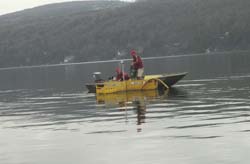New Study Reveals Ozone’s Hidden Toll on America’s Trees
A new nationwide study reveals that ozone pollution—an invisible threat in the air—may be quietly reducing the survival chances of many tree species across the United States. The research, published in the Journal of Geophysical Research: Atmospheres is the first…


 This research has shown the importance of utilizing innovative technology to manage and monitor complex aquatic ecosystems in urban settings. Oftentimes, programs for treating water systems are implemented without robust data to identify the true source of the problem. The value of this case study comes from the large number of cause-and-effect relationships that were clearly identified through the monitoring system.
This research has shown the importance of utilizing innovative technology to manage and monitor complex aquatic ecosystems in urban settings. Oftentimes, programs for treating water systems are implemented without robust data to identify the true source of the problem. The value of this case study comes from the large number of cause-and-effect relationships that were clearly identified through the monitoring system.